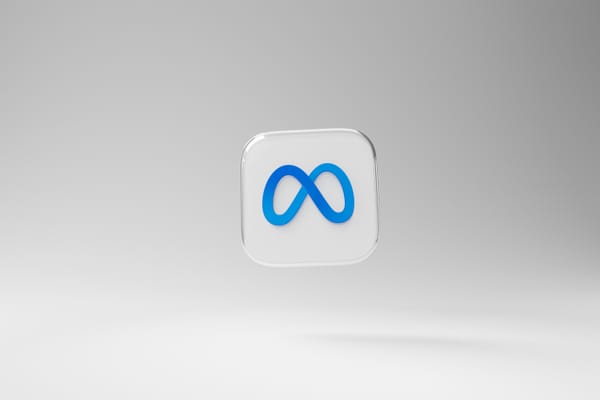How Instagram and Twitter buried the hatchet
A 9-year feud ends after a backyard pizza night

Today let’s talk about how two of the world’s most important social networks settled an ancient grudge, and what it tells us about the prospects for a more open internet as tech giants work to build a metaverse.
On Wednesday, Instagram delivered an announcement nine years in the making. Since 2012, Instagram photos shared to Twitter have appeared only as plain text links. From now on, Instagram links will include a preview of the image — just as they did before Instagram sold to Facebook, and competitive pressures and professional rivalries combined to worsen our collective user experience.
“They said it would never happen,” Instagram tweeted Wednesday. And indeed, this reversal was one that few saw coming. The path to peace involved wine, pizza, and backyard dealmaking — but to really appreciate what happened, you have to start at the moment everything fell apart.
When it launched in October 2010, Instagram was maybe the easiest way to share photos to Twitter. At the time, Twitter couldn’t even host photos itself; you had to post them through third-party services with confidence-inspiring names like Yfrog and Photobucket. Instagram, thanks primarily to its slick filters, quickly became one of the most popular ways to tweet photos.
There was also a personal connection between the apps’ founders. Twitter CEO Jack Dorsey had worked with future Instagram co-founder Kevin Systrom at Twitter’s predecessor company, Odeo, and after Instagram launched became one of its most important early supporters. Dorsey regularly tweeted Instagram photos to his large following, and soon he was joined by early-to-Twitter celebrities including Justin Bieber and Snoop Dogg. Twitter benefited from the easy photo sharing; Instagram, meanwhile, grew its user base quickly on the back of a feature that let you find your friends from Twitter on the app.
That all began to change in April 2012, when Facebook bought Instagram for $715 million. Twitter had also tried to buy the company, but lost out to Mark Zuckerberg and his promise to help Systrom and co-founder Mike Krieger reach global scale with minimal interference. Dorsey took the loss personally and stopped posting to Instagram forever. A few months later, Twitter blocked Instagram’s access to its following graph, preventing users from quickly finding their friends there.
Then, in December, Facebook retaliated: photos shared from Instagram would no longer appear in the Twitter timeline. As Sarah Frier recounts in her book No Filter, Facebook executives believed enabling photo previews was only helping Twitter to grow and increase its available ad inventory. And so the company pulled the plug on link previews, and Twitter got so mad about that that it leaked a story to the New York Times alleging Systrom had perjured himself during the sale to Facebook. (Nothing ever really came of that, aside from bad feelings.)
Then nine years went by. Instagram’s co-founders quit Facebook in 2018. By then, Instagram had hit 1 billion users, most of them younger than their counterparts on Facebook. Twitter entered an extended period of stasis that only began to thaw in the past two years, when the company added hundreds of employees and began rapidly shipping new products under head of product Kayvon Beykpour.
Every once in a while, the ban on Twitter link previews would come up internally, Instagram chief Adam Mosseri told me in an interview. Dorsey once sent him a direct message asking if they could work it out. But there were always higher priorities to address, and some lingering competitive concerns. (Twitter and Instagram compete more directly on photo sharing in Japan, for example, he said.) And so nothing happened.
Twitter, meanwhile, was increasingly open to cross-platform partnerships. It started a popular and hilarious Instagram account. It enabled the sharing of tweets directly to Instagram stories. It also began embedding YouTube videos directly in tweets.
I saw a Verge story about that last item and, in the obnoxious fashion of many journalists, quote-tweeted it with a mild dunk. “Now do Instagram photos. Thanks!” I posted in March. “We’d like to. Takes two to tango,” Beykpour clapped back. I tagged in Mosseri and asked if I could interest him in a tango. Mosseri responded with a GIF of a man dancing alone in kitchen.
I then promptly forgot any of this had ever happened.
Until yesterday, when Beykpour told me that, improbably, this interaction had somehow triggered a series of events that led to him and Mosseri eating pizza in Bruce Falck’s backyard.
“Credit to Adam,” Beykpour told me this week. “When I asked, I had zero expectation that it would happen. Just because, at this point, it’s lore — like, it was not bound to be, because the gods had forbidden it.”
Falck is head of revenue products for Twitter. Before that, he was CEO of an ad tech company called Turn, where he got to know a longtime former employee named Vishal Shah, who left just before Falck took over. Shah went on to become head of product at Instagram; as of August, his title is vice president of metaverse.
After the Twitter tango exchange, Falck reached out to his old friend Shah to see if he and their bosses would be amenable to a parley. It was May, and COVID anxieties in the Bay Area were still simmering. And so instead of meeting at a restaurant, the foursome met up for pizza in Falck’s backyard.
Beykpour and Mosseri had met in passing before, including once on a plane to South by Southwest. But they had never spent an extended amount of time together until that evening.
In the end, it was Beykpour who broached the subject.
“We had some wine, we had some sausages, and then I finally brought it up,” Beykpour said.
Mosseri told Beykpour, as he later told me, that Instagram didn’t have a “philosophical” objection to showing photos in the timeline. Rather, it was a matter of freeing up some engineers to work on it. Mosseri said he would look into it.
In the moment, Beykpour wasn’t sure if he believed him.
“We were like, ‘Okay, that's nice,’” Beykpour said. “And we didn’t expect it was gonna go anywhere. But it did.”
Unbeknownst to the Twitter team, Mosseri kept a list of what he called “finally features” — stuff that could be built relatively easily that the user base had been clamoring for. It’s the low-hanging fruit of the product world — stuff like letting everyone add links to their stories, a feature Instagram shipped last week.
“They’re not really a priority to the company strategically, but sometimes you’ve just gotta make time for that kind of work,” he said.
Back at his home office, Mosseri said he had only two real questions about switching link previews back on. One, would it create a competitive risk to Instagram? And two, would it create value for the user base?
In the end, he wasn’t confident he would be able to measure either risk accurately. But it seemed like users would like it, he said, and so he peeled off a couple engineers to start testing it.
“You know what, why not just do a little bit more of what people are asking for,” he remembers himself thinking. “It seems like a good thing to do.”
Testing took a couple months, but by this week it was ready. Beykpour told me he was grateful to Mosseri for working with Twitter — even if he’s already needling his rival in the hopes of getting Instagram to adopt large image previews, rather than small ones. (Developers get to choose which of Twitter’s embed formats they use; when I asked Mosseri about it, he said Instagram was just “starting small.”)
Meanwhile, Mosseri recently held a hackathon to work on more “finally features,” some of which will be shipping soon. (An iPad app is not among them, he volunteered before I could ask.) And he seemed to be enjoying the newfound spirit of goodwill with Twitter.
“I think it’s good to bury old hatchets,” he said.
Particularly given his parent company’s ambitious to build a world in which companies are much more integrated than they are today — a goal Meta CEO Mark Zuckerberg shared with me in announcing the company’s pivot to the metaverse this summer.
“More and more, platforms are going to need to figure out how to be more open,” Mosseri said. “And that’s tricky. Data portability has huge privacy implications. I think we need to figure that out as an industry.”
In the end, though, the only thing thing that was truly needed to end the Instagram-Twitter feud was time — and a willingness to put users’ needs ahead of strategic anxieties.
“People don't live on one product,” Beykpour said, noting the Twitter had also launched an integration with Snapchat last December. “They’re navigating in between them. So making those making those traversals feel convenient and colorful, I think, is important.”
Platformer Jobs
Last month, I asked you all what you would think of Platformer adding a jobs board to help you find interesting opportunities at the intersection of big tech and democracy. Responses were overwhelmingly positive, so today I wanted to let you know that we’re doing it. I’ll share more details next week, but I’ve already found some really good opportunities in tech policy, trust and safety, and other roles crucial to the subjects we cover around here. If you’re open to new work, I think you’ll enjoy taking a look. And if your company might be interested in posting jobs in the newsletter and on the jobs board, get in touch: casey@platformer.news
The Ratio
Today in news that could change public perception of the big tech companies.
⬇️ Trending down: Amazon will pay out more than $60 million in tips that it illegally withheld from delivery drivers. “The highest back payout going to a single driver is more than $28,000, while the average repayment is $422.” Shameful. (Makena Kelly / The Verge)
Governing
⭐ Three years after a similar move led to a workplace revolt, Google is once again seeking a major defense contract. Will this one inspire a similar revolt? Here are Daisuke Wakabayashi and Kate Conger in the New York Times:
The military’s initiative, which aims to modernize the Pentagon’s cloud technology and support the use of artificial intelligence to gain an advantage on the battlefield, is a replacement for a contract with Microsoft that was canceled this summer amid a lengthy legal battle with Amazon. Google did not compete against Microsoft for that contract after the uproar over Project Maven.
The Pentagon’s restart of its cloud computing project has given Google a chance to jump back into the bidding, and the company has raced to prepare a proposal to present to Defense officials, according to four people familiar with the matter who were not authorized to speak publicly. In September, Google’s cloud unit made it a priority, declaring an emergency “Code Yellow,” an internal designation of importance that allowed the company to pull engineers off other assignments and focus them on the military project, two of those people said.
Related: Meredith Whitaker, who helped lead the 2018 Google walkout, joined the Federal Trade Commission as a senior adviser on artificial intelligence. (Mitchell Clark / The Verge)
Google said it would add alternative payment systems to Android to comply with a new Korean law. The alternatives will only be available in Korea — for now. (Vlad Savov / Bloomberg)
What should the government actually do about Facebook? A survey of the potential options, including the rare “do nothing.” (Farhad Manjoo / New York Times)
Related: An internal document from the Facebook Papers by Andrew “Boz” Bosworth considers hate speech’s “demand-side” problem. (People like to do hate speech.) (Kali Hays, Candy Cheng , and Rob Price / Insider)
Amazon is ramping up anti-union efforts in Alabama again ahead of a possible second vote. Amazon won the first vote but it might be thrown out because of … Amazon’s anti-union efforts. (Jeffrey Dastin and Julia Love / Reuters)
The Department of Homeland Security is among the federal agencies developing “post-quantum cryptography” in anticipation of quantum computer soon breaking existing encryption models. Gulp! (Patrick Howell O'Neill / MIT Tech Review)
How social media companies help African governments abuse “disinformation laws” to target critics. “Most laws enacted by governments on the continent that ostensibly seek to regulate harms, like disinformation and online violence, end up targeting legitimate online speech instead.” There are lessons here! (Tomiwa Ilori / Rest of World)
Industry
⭐ Match Group says it’s building a dating metaverse. I wasn’t actually against the metaverse until reading this story. From Sarah Perez at TechCrunch:
Next year, Tinder Coins will become available to global users to make in-app purchases of Tinder’s à la carte products, like Boost and Super Like — tools aimed at helping online daters get more matches. They’ll also be used for new pay-as-you-go products that were previously only available with a subscription, like the See Who Likes You feature. And they’ll be used to incentivize certain behaviors on the app, like encouraging members to verify their profiles or add videos to their bio, for example.
Longer-term, however, Tinder will evolve its app to include virtual goods and a trading ecosystem, which is being planned for 2022 and beyond. This strategic initiative was detailed during Tinder parent company Match Group’s Q3 earnings, including in its Shareholder Letter and on its earnings call with investors on Wednesday morning.
Alphabet announced the creation of Isomorphic Labs, a new company dedicated to drug discovery. Its work will be based on DeepMind, the company’s artificial-intelligence powerhouse. (Cade Metz / New York Times)
Apple software chief Craig Federighi railed against the evils of sideloading during a presentation at Web Summit. "Attackers are virtually dressing up as mailmen, building tunnels underground and trying to scale your backyard walls with grappling hooks," Federighi said. OK. (Ben Brody / Protocol)
Facebook added new personalization and monetization features for Groups. New tools include “subscription-based paid subgroups, real-time chat for moderators, support for community fundraisers and more.” (Sarah Perez / TechCrunch)
Roku ended its private channels program, booting off Pornhub and other adult channels. The vast majority of people now watch porn, and the industry continues to regulate it like it’s 1965. (Catie Keck / The Verge)
Andreessen Horowitz invested $150 million in Mythical Games, another NFT-based gaming platform. Mythical makes Blankos Block Party, “an open-world multiplayer game focused on custom art and design, building and exploration, and curating a collection of Blankos, which are digital vinyl toys.” (Brandy Betz / CoinDesk)
Those good tweets
date: I'm an expert in genealogy
— Adam Cerious (@Browtweaten) 7:29 PM ∙ Nov 2, 2021
me: *mouthful of bread* how does he fit in the lamp?
Technically every mocking reply to a crypto bro is an NFT, because it's a digital record of them being owned
— The Baron Bisonimir Sexhornen: twitch.tv/brainmage (@Brainmage) 7:09 PM ∙ Nov 2, 2021
This is the only valid TikTok dance.
— How to be a Werewolf Kickstarter Vol 1 on now! (@shawnlenore) 9:07 PM ∙ Oct 22, 2021
Me when my therapist reveals what’s causing all my problems
— Lori Hardly (@KameronRaji) 10:56 PM ∙ Oct 12, 2021
Talk to me
Send me tips, comments, questions, and backyard pizza invitations: casey@platformer.news.





